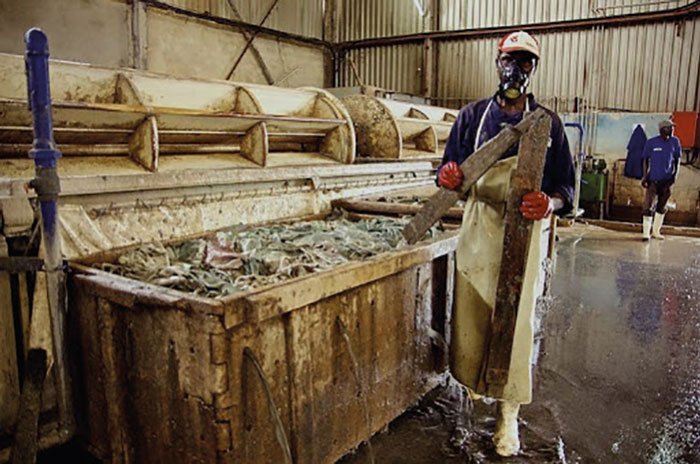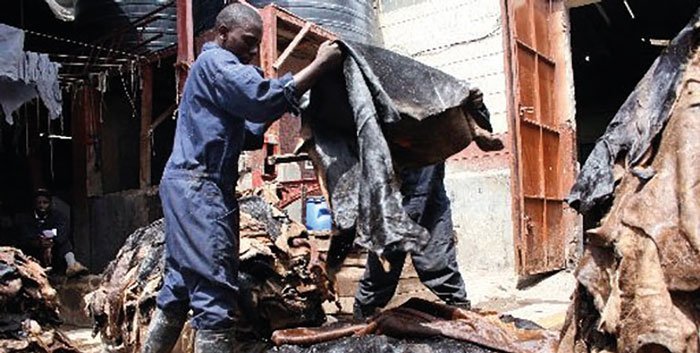
The Maghreb countries overlooking the Mediterranean Sea, especially Egypt and Morocco, but also Tunisia and Algeria, with the addition of Kenya.
These are the African nations in which, according to experts, local Governments will invest significant resources in the next few years to boost the tanning industry – a sector that, in this continent, can already rely on long-standing traditions and on business relations on the rise, especially with Europe. Economists have included the tanning and leather processing fields among those sectors featuring the highest development margin, production-wise as well as when it comes to consumption levels. Africa is considered not only an interesting destination by virtue of remarkably lower labour costs compared to the rest of the world, but also a vast market, currently inhabited by 1,22 billion people, a figure that, in line with some estimates, will double over the next 30/35 years, thus reaching 2,5 billion between 2050 and 2055.

More specifically, Africa has been drawing the attention of the Italian tanning and footwear machinery manufacturers, since it can guarantee new opportunities for the Italian leather industry. According to analysts and experts, this interest should increase in the upcoming years, especially to encourage the implementation of a real supply chain and the manufacturing of end products, as Italy stands out in both fields. Within the framework of a example of full-fledged circular economy – our Country, through its support, contributes to the development of the supply chain, while African nations invest in Italian know-how -, a special mention goes to one the key trends for the future growth of the tanning industry in Africa. It is imperative that these countries do not focus solely on the production of either crust or wet blue (first phase of the process), but they should deal with the manufacturing of finished hides as well, so as to foster the making of end articles such as shoes and leather goods, as the latter have a higher added value and, therefore, can increase domestic consumption revenues. Bearing this in mind, close attention should be also paid to the activities carried out by “Allpi – African Leather and Leather Products Institute” within the framework of COMESA (Common Market of East Africa), as it has been promoting several initiatives in the leather field, supporting the local entrepreneurs and workforce in a process of professional growth that, in the years to come, will play a key role resulting in an even more marked development, both production- and quality-wise.

The latest frontier for the development of the tanning industry concerns Kenya, one of Africa’s ten countries in which Development Cooperation, an integral part of the Italian foreign policy, is involved in projects for tanneries, especially when it comes to employees’ training. The Ministry of Foreign Affairs has been investing resources in Kenya for the establishment of startups that can guarantee employment opportunities to several young people: the cooperation with local authorities is bearing positive results, as they gladly work together with Italian professionals, praising their commitment and reliability in fostering development. Actually, this Country has been already focusing on tanning activities: last year, Kenyan Government allocated a fund amounting to $13,5 million for the the district located in the Rift Valley, where there is a tannery managed by the public body. The project entails the recycling and use of hides produced inside the very same county and that are currently sent to the landfill. The investment will also result in the opening of another tannery, of a leather goods factory and of a wastewater treatment plant covering a surface of approximately 3,200 sqm. The ultimate goal pursued by the aforementioned facility is to produce over 20 million pairs of shoes by 2022, with the addition of accessories and clothing items. The number of employees should increase from 100 to 400, without foregetting the jobs, about five million, provided by satellite activities, concerning also the processing of 4 thousand tons of leathers per year, according to the latest estimates.

Equally interesting the prospects for Morocco as well, one of the African nations featuring the highest commercial interchange rate with Italy, and where a new business cluster dedicated to the tanning supply chain will be based in the Casablanca-Settat region. Called “Ahl Loughlam”, said district is the result of a deal between local authorities, the Moroccan tanning industry federation and the Al Omrane group, the latter a public company charged, among other things, with urban development, habitat and workers’ integration: the overall cost of the investment amounts to approximately $11,5 million. The construction projects, kicked off in the second half of 2019, will be carried on up to spring 2021, when the cluster, covering around 100 thousand sqm., will be delivered to the enterprises. The leather processing industry will be the protagonist especially at Ahl Loughlam, while the surrounding area will be dedicated to other sectors as well. According to Morocco’s Ministry of Industry, Investment, Trade and Digital Economy, the domestic tanning industry’s turnover reached $490 million (2018 data), with 300 active companies and over 21 thousand workers.
By far, the most prominent leather processing cluster is based in Egypt, about 50 km north of Cairo, where the “Leather City” in Al Roubiki, a significant industrial area on the rise, is met with great success. The substantial funds allocated by the Government aim at establishing an internationally renowned leather district, featuring an average improvement concerning the quality of the finished product. A project praised by Italian entrepreneurs, especially by tanning machinery manufacturers: the professionals proceeding from the Arzignano district (Vicenza province) have carried out some missions in the area, establishing bonds and contacts with the local enterprises. Once completed, the Leather City will cover an area of approximately 7 million sqm., designed to manufacture 200 milion cubic meters of hides and to export $1 billion worth of leather goods every year. Highly ambitious initiatives, in which the Egyptian authorities and entrepreneurs strongly believe.
